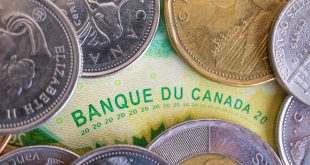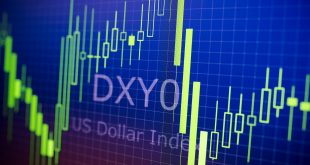US stock markets cratered on Wednesday, driven by mounting fears of stagflation—a toxic mix of economic stagnation and persistent inflation. Fresh data revealing a contracting economy and sticky price pressures sent investors scrambling. The Federal Reserve now faces a treacherous path: tame inflation without triggering a deeper downturn. Decisive policy moves are critical, but the margin for error is razor-thin.
Economic Data Sparks Alarm
The US economy shrank by 0.30% in Q1 2025, according to the Bureau of Economic Analysis, missing market expectations of 0.40% growth and a sharp reversal from the prior quarter’s 2.4% expansion. Inflation indicators added to the unease. The Core Personal Consumption Expenditures (PCE) Price Index, the Fed’s key inflation gauge, rose 3.5% in Q1, up from 2.6% in Q4 2024. The broader PCE Index climbed to 3.6%, compared to 2.4% previously, signaling accelerating price pressures.
Monthly Core PCE growth, however, stalled at 0.0% in March, down from 0.5% and below forecasts of 0.1%, hinting at weakening consumer momentum. Annual Core PCE eased to 2.6% from 3.0%, aligning with expectations but still above the Fed’s 2% target. These conflicting signals—slowing growth paired with persistent inflation—underscore the stagflation risk.
Markets Reel from the Fallout
The Dow Jones Industrial Average slid 0.4% to 40,374 points, shedding 133 points. The S&P 500 fell 0.7% to 5,525 points, while the tech-heavy Nasdaq dropped 1.0% to 17,286 points, reflecting heightened investor anxiety. The sharp declines signal a loss of confidence in the economy’s ability to dodge a prolonged slowdown. Historical parallels, like the 1970s stagflation era, loom large, though today’s global supply chain strains and post-pandemic recovery add unique challenges.
The Fed’s Next Move
Federal Reserve Chair Jerome Powell faces intense pressure to address this dual threat. Upcoming data, including Nonfarm Payrolls and consumer confidence metrics, will shape expectations for rate decisions. Tightening policy risks choking growth, while holding steady could let inflation spiral. The Fed’s 2022-2023 rate hikes, which curbed inflation but slowed investment, offer a cautionary tale. Opponents of aggressive hikes argue that supply-side constraints, not demand, drive current inflation, necessitating targeted fiscal measures over blunt monetary tools.
The markets demand clarity. Powell must signal a strategy that balances inflation control with economic stability. Delaying action risks eroding trust, while overreacting could deepen the downturn. Policymakers should draw on data-driven precision, avoiding knee-jerk responses to political or market noise, to guide the economy through this turbulent phase.

 Noor Trends News, Technical Analysis, Educational Tools and Recommendations
Noor Trends News, Technical Analysis, Educational Tools and Recommendations




